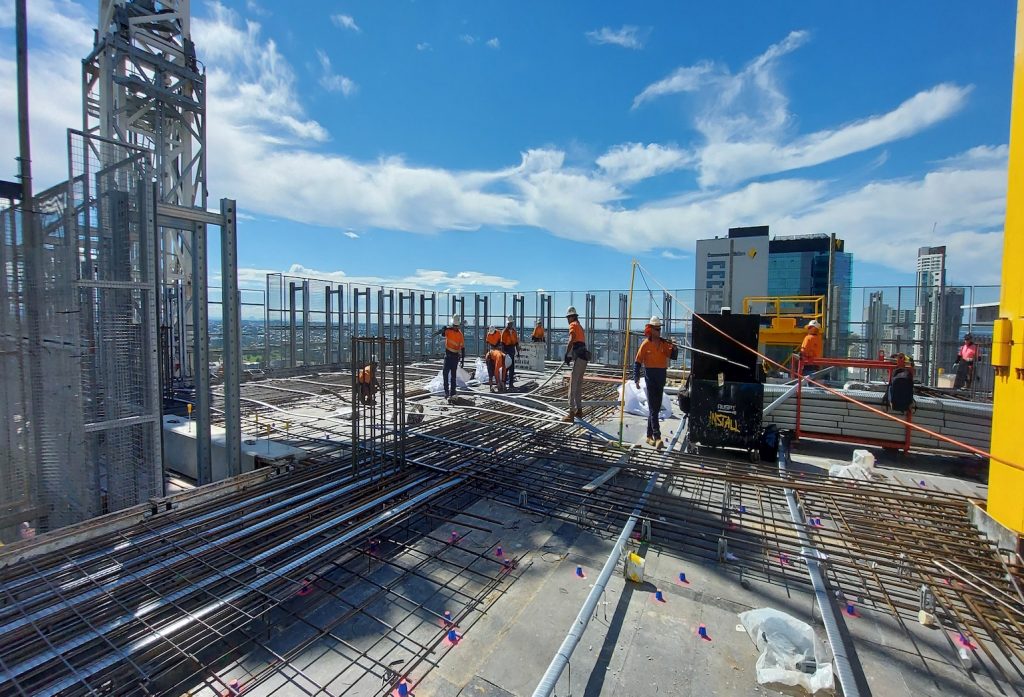Ellis Air Conditioning put BIM at the heart of how it operates, and became a case study for how collaboration, innovative business processes and the right software solutions can transform a company.
Adopting an approach led by building information modelling (BIM) has helped Ellis Air Conditioning meet the ever-changing demands of its unique projects while reducing risk and maintaining the highest levels of efficiency.
As a leading Australian heating, ventilation and air conditioning (HVAC) company, Ellis Air works on a wide range of complex projects including multi-story apartments, offices, sporting facilities, education facilities and hospitals. Some notable projects completed by Ellis Air include the $100 million mechanical HVAC installations at Brisbane’s Queens Wharf, the University of Queensland’s ANL building (an 11-storey mixed-use teaching and chemical engineering research facility), and Melbourne’s Australia 108.
Ellis Air’s new approach was facilitated by its partnership with multinational software company Autodesk, and has had positive impacts across the entire project lifecycle – from planning, designing and engineering to construction and maintenance.
The results have been transformative. The company has increased efficiency and accuracy while reducing risk, rework and waste.
Why the BIM-led approach?
BIM is the foundation of digital transformation in the architecture, engineering and construction (AEC) industry. It’s a holistic process of creating and managing information for a built asset. A collaborative system, it helps industry professionals to design, deliver and maintain assets throughout a project’s lifecycle.
Ellis Air works on bespoke heating, ventilation and air conditioning solutions that suit the requirements of each individual project, meaning they require up-to-date modelled information that can only be provided by specialised software.
In 2017, the company began a new partnership with Autodesk to help it transition to full Revit-modelled workflows. Rather than arriving at BIM in a piecemeal fashion, Ellis Air embraced ground-up, holistic changes.
Today the company uses Autodesk’s AEC Collection 2022 across the lifecycle of every project. The collection includes BIM Collaborate Pro (BIM 360 Design); Docs, Build, Coordinate and Field; Assemble; and Navisworks Manage with BIM 360 integration.
The results of the company’s new approach have been impressive. Below is a short summary.
- Improved cross-team collaboration: Ellis Air’s cross-team collaboration and spatial coordination has improved with BIM Collaborate Pro (BIM 360 Design). It has eliminated isolated documentation and data and enables the team to maintain a single source of truth.
- Implementing connected workflows: Connected workflows have been implemented across Ellis Air’s projects both internally and externally. The company collaborates with suppliers and other contractors via BIM 360 Docs and Assemble Systems. These workflows allow for estimation and programming using early design models. Increased accuracy and efficiency is achieved with Assemble Systems and Excel integration.
- Enhanced data management: Ellis Air has enhanced their data management. Revit Scheduling is used to manage equipment, field-to-model and procurement scheduling, and allows the company to maintain a central database for the whole supply chain.
- Access to essential information in the field: The BIM-led approach means Ellis Air teams can access essential information in the field with mobile devices. As a bonus, the company no longer prints anything, which reduces some risks associated with the handling of sensitive information and decreases the company’s environmental footprint.
The road to the future
Ellis Air’s new approach means the company is on the path to BIM Level 3 maturity and LOD 500. Ian Pearse, Ellis Air’s National Digital Services Manager, says sharing work on the cloud and having a common data environment has enabled seamless remote working and improved the company’s workflows.
“Revit Scheduling, with included metadata, is a revelation,” says Pearse. “The team no longer has to create drawings, they build databases. Having all the information for the constructed assets in one place means that the days of keeping several different documents aligned are over.”
Pearse says the bi-directional data enabled by Assemble Systems and Revit Link prevents double handling, reduces the number of emails and spreadsheets, and enables the production of construction-ready sections as needed.
“As we keep the design model alive throughout the lifecycle, from PIM to AIM, we needed a way to produce construction-ready sections for work areas,” says Pearse. “Keeping this as a ‘just-in-time’ activity means we can allow for design changes up until the final moment, which reduces rework and waste.”
Pearse says implementing connected workflows has also reduced risk across the entire project.
“Many people talk about the cost and efficiency benefits of a BIM-led approach in isolation, but if you take a step back, in construction what you’re really seeing is the value of risk mitigation,” he says.
“Mistakes cost time and money. Double handling of information, time delays, inaccurate data, and broken workflows increase risk substantially. If you choose your solutions based on reducing risk in the business, everything else becomes a beneficial by-product.”
Ashley Robinson, Ellis Air’s General Manager, Queensland, says Autodesk has not just been a supplier, they’ve been a partner.
“That’s the key difference. The high level of trust in our relationship has assisted in the evolution of these software solutions and improved how we work with them,” she says. “We have a voice in the creation of new products and updates.”
Sumit Oberoi, Industry Strategy Manager at Autodesk, agrees.
“It has been exciting to partner with Ellis Air to create and implement a BIM-led strategy that meets the company’s evolving project demands,” he says. “We’ve been able to support the team with the right tools. We’ve combined technologies that will unleash Ellis Air’s talent, unlock insights and empower the company to find the best solutions for the business.”
To find out more about how Autodesk Construction Cloud helps subcontractors connect workflows and win more work, visit this page.

